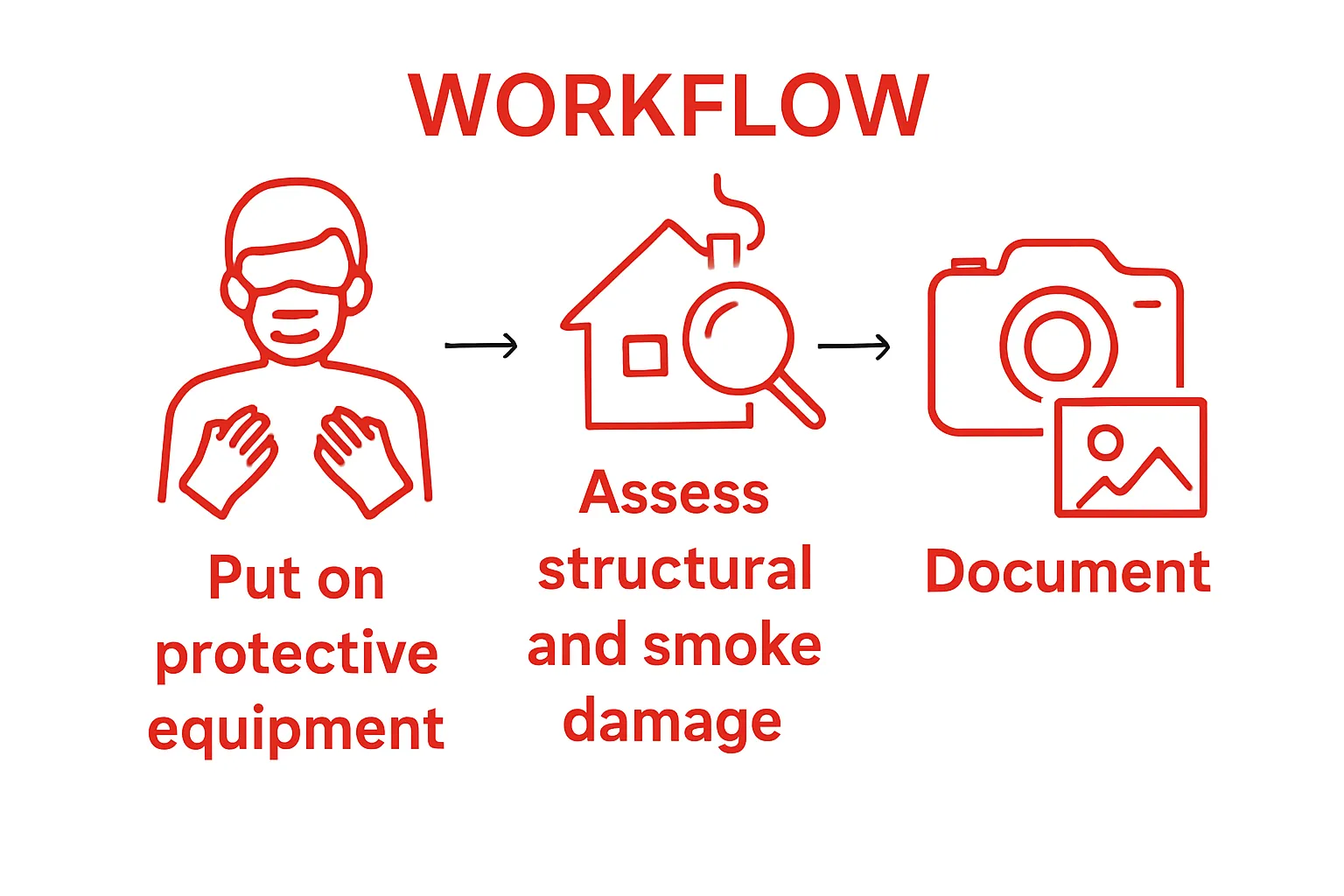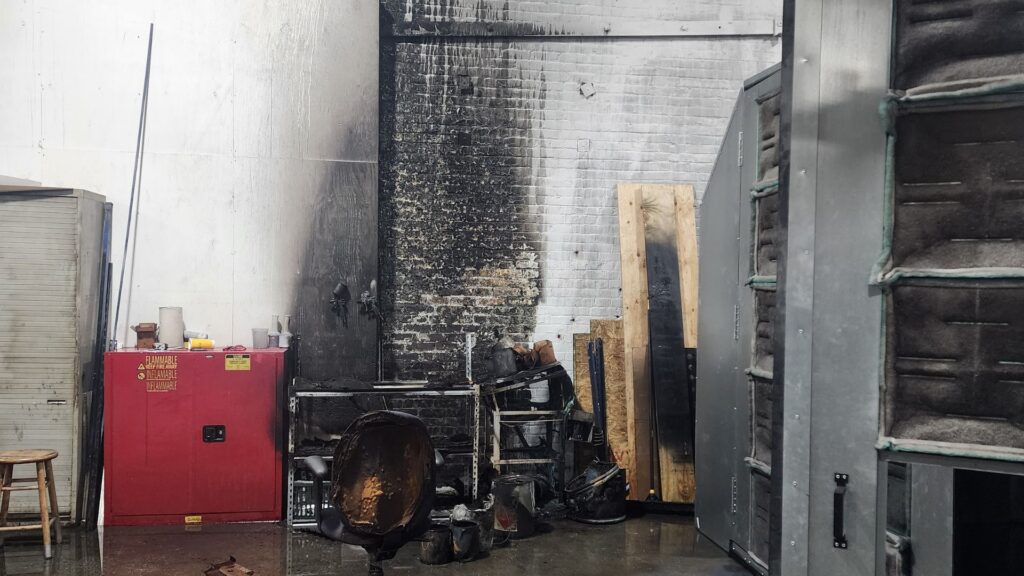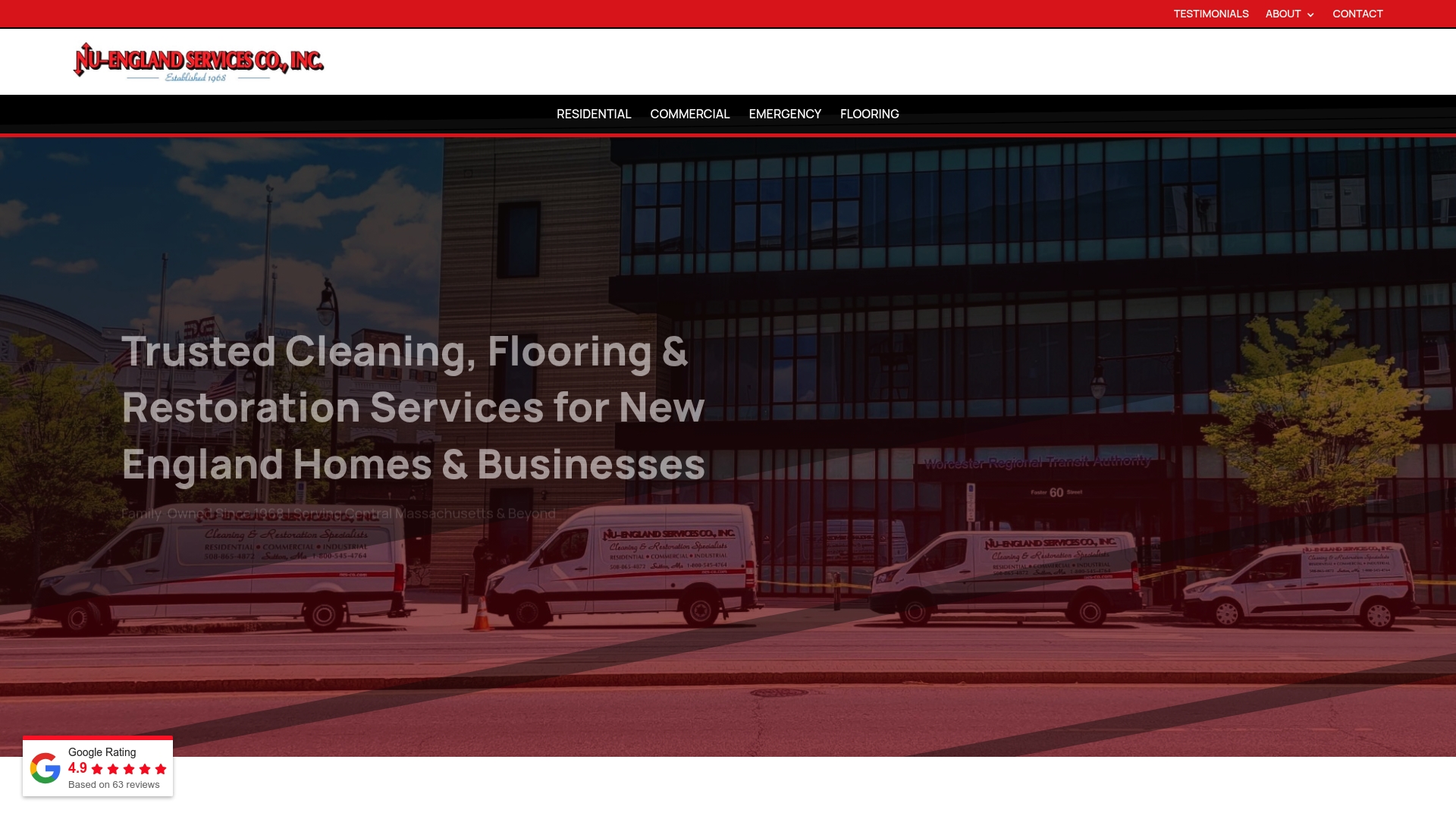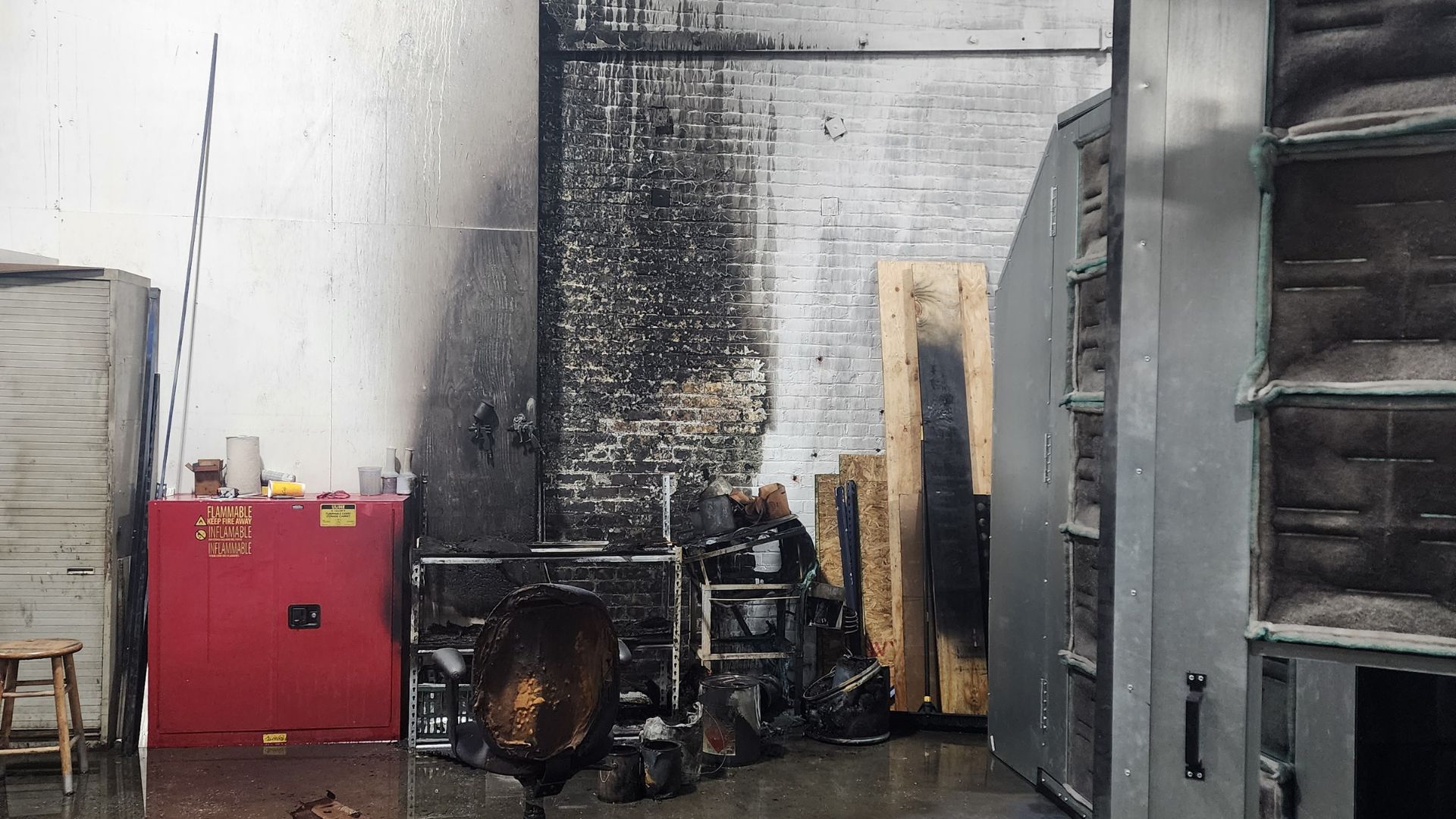Fire damage can leave your property looking devastated and unsafe. Yet what really surprises most homeowners is that structural weakening can occur even when the visible damage seems minor. The real risk often hides deeper than scorched walls or charred furniture and it is the unseen threats—like hidden toxins and weakened supports—that make a thorough, professional assessment the unexpected hero of any recovery plan.
Table of Contents: Fire Damage Cleanup Checklist
Quick Summary
| Key Point | Explanation |
|---|---|
| 1. Assess fire damage thoroughly | Conduct a detailed visual inspection of the property to identify both apparent and hidden damage. |
| 2. Prioritize personal safety | Use appropriate protective gear to prevent exposure to toxic substances and hazards during cleanup. |
| 3. Engage professional restoration experts | Hire certified fire damage restoration professionals for a comprehensive assessment to ensure all damage is identified and evaluated. |
| 4. Systematically remove debris | Sort items into disposal and salvage categories while protecting yourself and preventing additional property loss. |
| 5. Clean and deodorize effectively | Implement strategic cleaning methods to eliminate smoke residues and odors, ensuring thorough treatment of all affected areas. |
Step 1: Assess the Fire Damage Extent
Fire damage assessment forms the critical foundation of your entire cleanup strategy. Understanding the full scope of destruction allows you to develop a precise, comprehensive restoration plan that protects your property and ensures safety.
Begin by conducting a systematic visual inspection of your entire property. Wear protective equipment including respirator masks, safety goggles, and sturdy work gloves to prevent exposure to hazardous particles. Look beyond surface damage and evaluate structural integrity carefully. Check walls, ceilings, floors, and support beams for signs of compromise.
Structural weakening can occur even when damage seems minimal, so professional evaluation becomes crucial.
Documentation plays a pivotal role in this initial assessment phase. Photograph and video record every area of damage systematically. These visual records serve multiple purposes: supporting insurance claims, tracking restoration progress, and providing a baseline for repair teams.
 Use natural lighting and take multiple angles to capture the full extent of destruction.
Use natural lighting and take multiple angles to capture the full extent of destruction.
Key areas to thoroughly inspect include:
- Electrical systems and wiring
- Load bearing structural elements
- Smoke and soot accumulation zones
- Water damage from firefighting efforts
- Potential hidden damage behind walls or in attic spaces
Consider engaging a professional fire damage restoration expert for a comprehensive assessment. According to National Fire Protection Association, professional evaluation significantly improves recovery outcomes and helps identify potential risks that untrained eyes might miss.
Remember that fire damage assessment is not just about visible destruction. Smoke residue, toxic chemical interactions, and potential structural weakening require expert analysis. Take your time, be methodical, and prioritize safety throughout the entire process.
Step 2: Ensure Safety and Wear Protective Gear
Safety becomes your absolute priority during fire damage cleanup. The aftermath of a fire presents multiple hidden hazards that can compromise your health and well-being if not approached with extreme caution. Protective gear is not optional but essential for preventing potential injury and exposure to toxic substances.
Start by securing the proper protective equipment before entering the damaged area. Your personal protective kit should include a comprehensive range of safety items designed to shield you from multiple risks.
Below is a summary table of essential protective gear for fire damage cleanup, including specifications and the purpose for each item.
| Protective Gear | Specification/Type | Purpose |
|---|---|---|
| Full face respirator | With organic vapor cartridges | Protects respiratory system from smoke, toxins |
| Chemical resistant rubber gloves | Heavy duty, non-porous | Shields skin from chemicals and soot |
| Safety goggles | With side shields | Provides eye protection from debris/irritants |
| Work clothing | Long-sleeve, thick fabric | Minimizes skin exposure and injury risk |
| Steel-toed boots | Slip resistant | Protects feet from debris and sharp objects |
| Disposable coveralls | Single-use, full-body coverage | Provides extra barrier against contaminants |
| Hard hat | Industrial grade | Protects head from falling objects |
| High visibility safety vest | Bright color, reflective strips | Enhances safety, visibility on site |
Your protective clothing must cover your entire body. Select heavy duty work gloves made from chemical resistant materials, long sleeve shirts and pants made from thick fabric, steel toed boots with slip resistant soles, and safety goggles that provide complete eye protection. Disposable coveralls can provide an additional layer of protection against soot and chemical contamination.
Specific safety items to include:
- Full face respirator with organic vapor cartridges
- Chemical resistant rubber gloves
- High visibility safety vest
- Hard hat for potential overhead hazards
- Safety glasses with side shields
According to Occupational Safety and Health Administration, proper personal protective equipment significantly reduces the risk of injury during disaster cleanup scenarios. Verify your equipment fits correctly and provides comprehensive coverage before entering any fire damaged space.
Before beginning cleanup, establish clear safety protocols. Check for structural instability, electrical hazards, and potential gas leaks. Never work alone in a fire damaged environment. Always have a partner or emergency contact who knows your location and can summon help if needed. Your personal safety supersedes any cleanup timeline or property restoration goal.
Step 3: Contact Professionals for Assessment
Contacting professional fire damage restoration experts transforms your cleanup from a potentially overwhelming task into a structured, systematic recovery process. Professional assessment provides critical insights that go far beyond what an untrained eye can detect, ensuring comprehensive evaluation of your property’s condition.
Begin by researching certified fire damage restoration companies with proven track records in comprehensive property assessment. Look for professionals who are licensed, insured, and have specific experience in fire damage restoration. These experts utilize advanced diagnostic tools like thermal imaging cameras, moisture meters, and structural integrity testing equipment to uncover hidden damage that might escape visual inspection.
When reaching out to potential restoration teams, prepare a detailed overview of your situation. Be ready to provide comprehensive information about the fire’s origin, duration, and areas most visibly affected. Professional assessors will want to understand the complete context of the damage. Ask specific questions about their assessment process, expected timeline, and the detailed report they will generate. A thorough professional report becomes crucial for insurance claims and future restoration efforts.
Key information to discuss with restoration professionals:
- Extent of structural damage
- Smoke and soot contamination levels
- Potential water damage from firefighting efforts
- Estimated restoration timeline and costs
- Recommendations for immediate mitigation steps
According to Institute of Inspection, Cleaning and Restoration Certification, professional assessment is critical in determining the most effective restoration strategy. By engaging experts early, you minimize secondary damage and create a targeted recovery plan.
For additional insights into comprehensive damage assessment, consider reviewing professional guides that provide deeper understanding of restoration processes. Professional assessors will ultimately help you navigate the complex path from damage to complete property recovery, providing expert guidance every step of the way.
Step 4: Remove Debris and Salvageable Items
Removing debris and identifying salvageable items represents a critical phase in fire damage restoration. This step requires methodical approach and careful decision making to minimize additional property loss while preparing for comprehensive cleanup and potential reconstruction.
Begin by creating designated sorting zones for different categories of items. Establish three primary areas: immediate disposal, potential salvage, and items requiring professional restoration. Use heavy duty plastic tarps or marked containers to separate materials systematically. Wear your protective gear consistently during this process to prevent exposure to hazardous particles and potential toxic residues.
Carefully evaluate each item for potential restoration. Porous materials like fabrics, upholstery, and carpets often require professional cleaning or complete replacement. Metal, glass, and certain hard surfaces might be salvageable through specialized cleaning techniques. Electronics and appliances demand careful assessment by professional technicians who can determine whether internal damage compromises their functionality.
Important sorting criteria to consider:
- Structural integrity of items
- Extent of smoke and soot contamination
- Potential health risks from chemical exposure
- Cost of professional restoration versus replacement
- Sentimental or irreplaceable value of specific items
According to Environmental Protection Agency guidelines, proper debris removal is crucial in preventing secondary contamination and potential health hazards. Document everything you remove through photographs and detailed inventories. These records become essential for insurance claims and tracking the restoration process.
For professional insights into thorough cleaning processes, consider consulting restoration experts who can provide specialized guidance. Remember that swift, organized debris removal sets the foundation for successful property recovery and minimizes potential long term damage from lingering fire residues.
Step 5: Clean and Deodorize Affected Areas
Cleaning and deodorizing fire damaged spaces requires a strategic, multilayered approach that goes far beyond simple surface cleaning. Smoke and soot penetrate deeply into materials, creating persistent odors and potential health hazards that demand comprehensive treatment techniques.
Begin with dry cleaning methods using specialized HEPA vacuum cleaners designed to capture microscopic particles without spreading contamination. These vacuums feature advanced filtration systems that trap soot, ash, and smoke residues more effectively than standard household equipment. Work systematically from top to bottom in each room, ensuring you remove loose particles before applying wet cleaning techniques.
Wet cleaning processes demand careful selection of professional grade cleaning solutions specifically formulated for fire damage restoration. Chemical sponges and specialized alkaline cleaners break down complex smoke residues without causing additional surface damage. Focus on non porous surfaces first, using careful wiping techniques that prevent spreading contamination. Textiles and porous materials might require professional steam cleaning or complete replacement depending on contamination levels.
Key cleaning considerations:
- Use pH neutral cleaning agents
- Apply cleaning solutions in controlled, small sections
- Test cleaning solutions on inconspicuous areas first
- Ventilate spaces thoroughly during and after cleaning
- Monitor surfaces for potential chemical reactions
According to Institute of Inspection, Cleaning and Restoration Certification, professional deodorization techniques like thermal fogging and ozone treatments can neutralize embedded odor molecules. These advanced methods penetrate materials more effectively than traditional air fresheners or masking agents.

For comprehensive insights into deep cleaning techniques, professional restoration experts recommend a systematic approach. Remember that thorough cleaning and deodorization not only restores your property’s appearance but also eliminates potential long term health risks associated with fire damage residues.
Step 6: Conduct Final Safety Inspection and Restoration
The final safety inspection and restoration phase represents the critical culmination of your fire damage cleanup journey. This comprehensive evaluation determines whether your property is truly safe and ready for reoccupation, requiring meticulous attention to detail and professional expertise.
Begin by scheduling a thorough professional inspection with certified restoration experts who will conduct an exhaustive assessment of structural integrity, electrical systems, and potential hidden damage. These specialists utilize advanced diagnostic tools like thermal imaging cameras and moisture meters to uncover subtle vulnerabilities that might escape casual observation. They will evaluate load bearing structures, check electrical wiring for potential fire related compromise, and assess potential water damage from firefighting efforts.
This table highlights the main areas professional final inspections focus on, summarizing what is verified and why each check is important for your property’s safety.
| Inspection Focus Area | What is Checked | Purpose/Benefit |
|---|---|---|
| Structural stability | Integrity of load-bearing walls, beams | Ensures property is safe for occupancy |
| Electrical system functionality | Wiring, circuit panels, outlets | Prevents electrical hazards/fires |
| Moisture and mold risks | Water damage in walls, ceilings, floors | Identifies potential for mold or decay |
| Chemical residue verification | Surfaces and air for lingering toxins | Confirms cleanup was effective, ensures safety |
| Smoke/soot contamination | Walls, air ducts, hard-to-reach spaces | Eliminates hidden odor and health risks |
During the inspection, professionals will systematically verify that all previous cleanup and restoration steps have been executed effectively. They will look beyond surface appearances, examining internal wall cavities, electrical systems, plumbing, and foundational elements for any lingering risks. This comprehensive approach ensures that seemingly minor damage does not escalate into significant future problems that could compromise your property’s safety and value.
Critical inspection focus areas:
- Structural stability assessment
- Electrical system functionality
- Potential moisture and mold risks
- Chemical residue verification
- Smoke and soot contamination levels
According to National Fire Protection Association, professional final inspections significantly reduce long term risks associated with fire damage. Restoration teams will provide detailed documentation of their findings, which becomes crucial for insurance purposes and future property maintenance.
For comprehensive insights into thorough cleaning processes, consider consulting professional restoration experts who can guide you through the nuanced final stages of property recovery. Remember that this final step is not just about physical restoration but about ensuring your property is genuinely safe, functional, and prepared for your return.
Take the Next Step Toward Safe Fire Damage Recovery
Every step in our “Essential Fire Damage Cleanup Checklist for 2025” is designed to protect your space and your peace of mind. But even with a detailed plan, facing hidden smoke, water, and structural damage alone can feel overwhelming. Relying on experts who know how to uncover and resolve stubborn problems like lingering odors, deep-set soot, and potential mold growth ensures your home or business truly recovers.
Tackle every cleanup challenge by connecting with Nu-England Services. Discover how our Emergency Restoration Services handle the hardest fire recovery tasks, from debris removal to comprehensive deodorizing. Our environmentally conscious specialists treat smoke-affected belongings and deep-clean surfaces you might miss. We also offer Mold Remediation to address hidden hazards that often appear after fire and water damage.

Do not wait for secondary damage to turn small problems into major setbacks. Request your free quote from the experienced, trusted team at Nu-England Services now and take the final step toward a cleaner, safer space.
Frequently Asked Questions
What are the essential steps in fire damage cleanup?
The essential steps in fire damage cleanup include assessing the extent of the damage, ensuring safety and wearing protective gear, contacting professionals for assessment, removing debris and salvageable items, cleaning and deodorizing affected areas, and conducting a final safety inspection and restoration.
Why is professional assessment critical after a fire?
Professional assessment is critical because experts can uncover hidden damage and provide a comprehensive evaluation of your property’s condition. They utilize advanced diagnostic tools and techniques to ensure all areas of concern are addressed, minimizing the risk of future issues.
What protective gear should I wear during fire damage cleanup?
During fire damage cleanup, you should wear a full face respirator with organic vapor cartridges, chemical resistant gloves, safety goggles, heavy duty work clothing, and steel-toed boots. Disposable coveralls are also recommended to protect against soot and chemical contamination.
How do I know if my items can be salvaged after a fire?
To determine if items can be salvaged after a fire, evaluate them based on their material, structural integrity, and contamination levels. Porous materials often need professional assessment for restoration, while non-porous surfaces may be cleanable or salvageable if not severely damaged.

